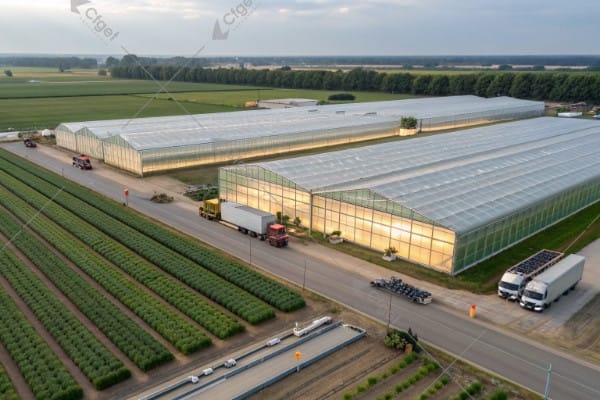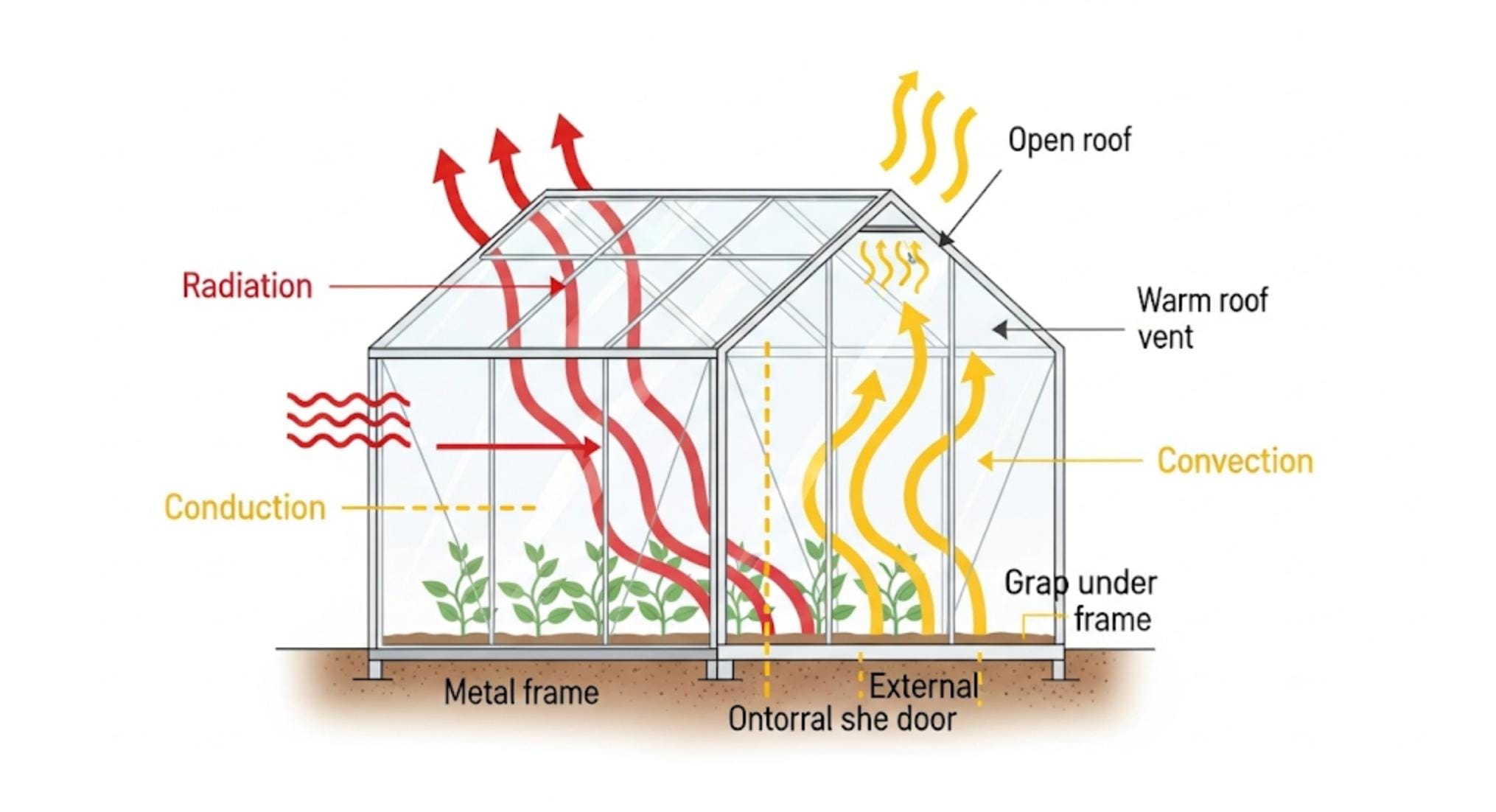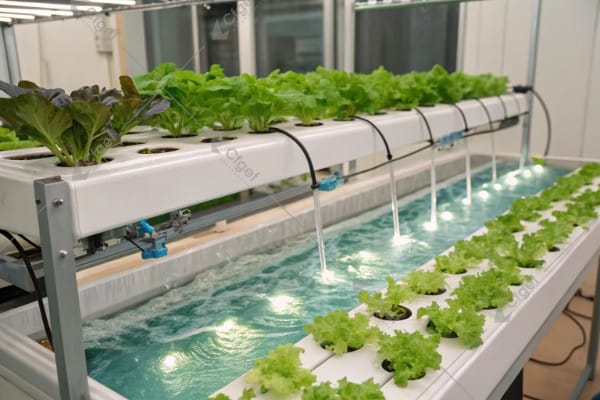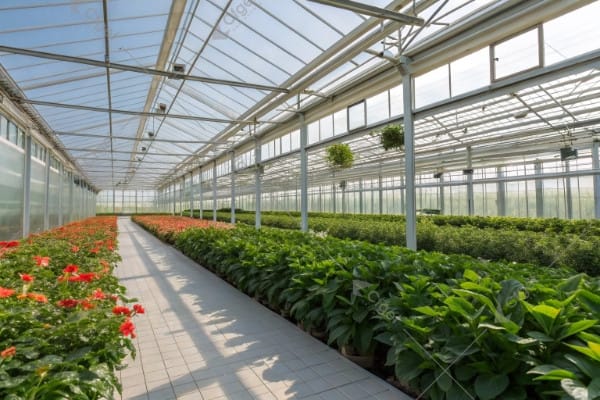Growing tomatoes in your greenhouse should be easy, but many growers struggle with poor yields, plant diseases, and structural failures. I see these problems every day, and they’re almost always due to incorrect greenhouse selection.
Selecting the right greenhouse for tomatoes requires balancing size, height, light transmission, ventilation, and structural strength. Commercial tomato cultivation demands specialized features like hanging systems, substrate irrigation, and strong support for heavy fruiting vines to ensure maximum productivity and profit.

After 28 years in the greenhouse industry, I’ve learned that tomatoes have specific needs that many standard greenhouse designs simply cannot meet. When I first started at CFGET, I visited a farm where the grower had invested in a beautiful greenhouse, but his tomato plants were stunted and diseased. The structure was too short, the ventilation inadequate, and the support system couldn’t handle the weight of fruit-laden vines. Since then, I’ve made it my mission to help growers understand what tomatoes truly need to thrive in a protected environment.
Don’t Miss:——Exploring Greenhouse Types: Finding the Perfect Structure for Your Needs
You might like:——Mastering Greenhouse Tomato Cultivation: A Step-by-Step Guide?
What Size and Height Do Tomato Plants Need in a Greenhouse?
Many tomato growers underestimate how much space their plants need, resulting in crowded conditions that reduce yields and increase disease. I’ve seen countless operations where plants compete for light and air, ultimately producing far less than their potential.
For commercial tomato production, greenhouses should have a minimum height of 3-4 meters at the gutters and 5-6 meters at the peak. Each plant needs 0.4-0.5 square meters of space, with row spacing of 1-1.2 meters to allow for proper air circulation, maintenance access, and maximum light exposure.
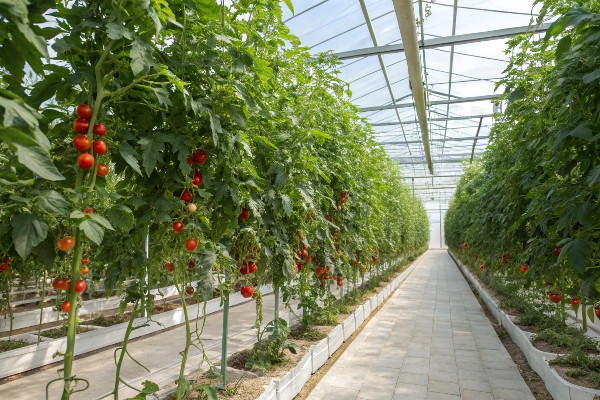
Tomato plants are not small creatures by any means – they’re ambitious climbers that will reach for the sky if given the chance. In my early days consulting for greenhouse operations, I visited a farm in Thailand where the owner had built a beautiful but insufficient 2-meter tall greenhouse. By mid-season, the indeterminate tomato vines were pressed against the roof, creating a humidity trap that led to devastating fungal outbreaks.
Height Requirements for Different Tomato Varieties
When designing a greenhouse for tomatoes, understanding variety-specific needs is crucial. Determinate varieties (bush types) typically grow to 3-4 feet (0.9-1.2 meters) before stopping, while indeterminate varieties can easily grow 10-15 feet (3-4.5 meters) in a single season if properly supported and maintained.
For commercial operations focusing on long-season production with indeterminate varieties, I always recommend a minimum gutter height of 4 meters. This allows for the "lower and lean" technique where plants can grow continuously for 10-12 months, producing significantly higher yields than shorter greenhouses permit.
Space Calculations for Maximum Productivity
The spacing between plants directly impacts your yield potential. Through years of testing different configurations, we’ve found that the optimal spacing depends on several factors:
| Tomato Type | Plant Spacing | Row Spacing | Plants per m² | Recommended Greenhouse Height |
|---|---|---|---|---|
| Indeterminate (Commercial) | 40-50 cm | 1.0-1.2 m | 2.0-2.5 | 4-6 m |
| Determinate (Bush) | 30-40 cm | 0.8-1.0 m | 2.5-3.3 | 3-4 m |
| Cherry Types | 40-50 cm | 1.0-1.2 m | 2.0-2.5 | 4-6 m |
| Heirloom Varieties | 50-60 cm | 1.2-1.4 m | 1.4-1.7 | 3-5 m |
One of our most successful projects involved retrofitting a European client’s greenhouse by raising the structure an additional 1.5 meters. This single modification increased their annual yield by 23% simply because the plants could continue growing vertically for longer periods before reaching the support wire system.
At CFGET, we design our commercial tomato greenhouses with productivity in mind, ensuring that height and space allocations match your specific variety needs and production goals. I’ve found that investing in proper dimensions from the start prevents costly modifications later and maximizes return on investment throughout the greenhouse’s lifespan.
Glazing Materials Compared: Impact on Tomato Light and Heat?
Poor glazing choices lead to weak plants, delayed harvests, and uneven ripening. I’ve consulted with farms where inadequate light transmission reduced yields by 30% despite perfect care in all other aspects of cultivation.
Glass provides 90-95% light transmission ideal for winter tomato production but costs more and retains heat. Polycarbonate offers durability and diffused light (80-85% transmission) that reduces leaf burn. Polyethylene film is affordable with 80-90% transmission but needs replacement every 3-4 years. For most commercial tomato operations, diffused glass or anti-condensation films deliver optimal results.
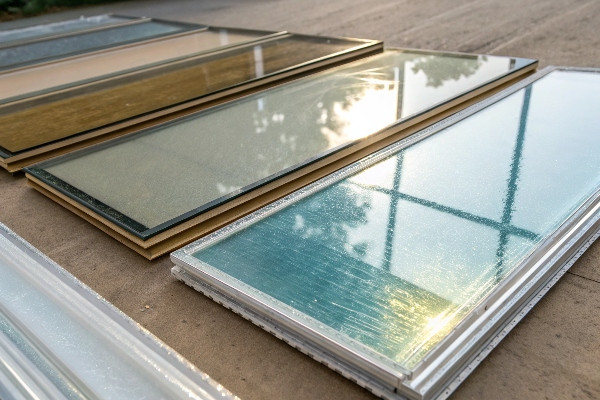
The choice of glazing material significantly impacts your tomato crop’s performance throughout the season. I remember visiting a large tomato operation in Central Asia that had installed standard clear polyethylene film. During summer months, the direct light caused significant fruit scalding and heat stress, reducing marketable yields by nearly 25%. After we helped them switch to a diffused light film with IR additives, their summer production improved dramatically.
Light Requirements for Optimal Tomato Production
Tomatoes are true sun-lovers, requiring significant light intensity to produce sweet, flavorful fruit. For commercial production, the goal is to provide a daily light integral (DLI) of 20-30 mol/m²/day. However, not all light is created equal when it comes to greenhouse glazing.
Different materials not only transmit different quantities of light but also affect its quality and distribution. Through our research and field observations, we’ve documented the following impacts:
| Glazing Material | Light Transmission (%) | Light Diffusion | UV Transmission | Expected Lifespan | Heat Retention | Impact on Tomato Quality |
|---|---|---|---|---|---|---|
| Clear Glass | 90-95% | Low | High (if not coated) | 25+ years | High | High sugar content, potential sunscald |
| Diffused Glass | 85-90% | High | Variable | 25+ years | High | Even ripening, reduced sunscald |
| Twin-wall Polycarbonate | 75-82% | Moderate | Low | 10-15 years | Very High | Slower ripening, good winter production |
| Single-layer Polyethylene | 85-90% | Low-Moderate | Variable | 3-5 years | Low | Fast growth, requires shade in summer |
| Diffused Polyethylene | 80-85% | High | Variable | 3-5 years | Low | Even fruit development, reduced stress |
Heat Management Considerations
In our work with clients across Southeast Asia, heat management often becomes even more important than light transmission. Tomatoes perform best when daytime temperatures stay between 21-29°C (70-85°F), with fruit set becoming problematic above 32°C (90°F).
I worked with a large producer in Vietnam who was struggling with poor fruit set during their hottest months despite using expensive varieties bred for heat tolerance. By switching from clear polyethylene to a specialized heat-reducing film that blocked near-infrared radiation while maintaining PAR (photosynthetically active radiation) transmission, they were able to reduce internal greenhouse temperatures by 4-5°C without additional cooling, dramatically improving fruit set during summer months.
For European clients with colder climates, we often recommend twin-wall polycarbonate or glass with thermal screens for areas where winter production is desired, as the energy savings can be substantial. One Dutch client calculated a 38% reduction in heating costs after installing our recommended glazing system with automated thermal screens.
The key is finding the right balance between light transmission for growth and heat management for optimal fruiting. At CFGET, we analyze your specific climate conditions, production seasons, and energy costs to recommend the most appropriate glazing system for your tomato operation.
Ventilation & Air Circulation: Critical for Preventing Tomato Diseases?
Inadequate ventilation creates the perfect environment for devastating diseases like late blight, gray mold, and leaf mold. I’ve witnessed entire crops lost because growers underestimated ventilation needs, especially in humid regions.
Effective tomato greenhouse ventilation requires ventilation capacity equal to 1-1.5 times the greenhouse volume per minute. This means combining roof vents (15-25% of floor area), side vents (15-20% of wall area), and horizontal airflow fans (one 20" fan per 80-100 m²). Automated systems should maintain relative humidity below 85% to prevent disease while ensuring CO₂ replenishment for maximum growth.
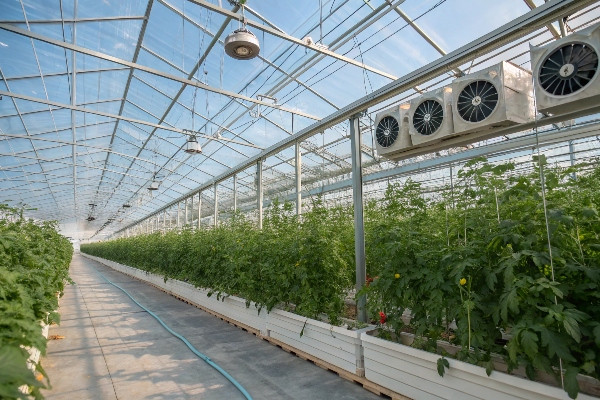
Ventilation might not be the most exciting aspect of greenhouse design, but in my 28 years of experience, it’s often the difference between success and failure. I recall a project in Malaysia where we helped a grower redesign their ventilation system after they’d lost two consecutive crops to Botrytis (gray mold). The greenhouse had adequate space and excellent light, but the humid air became trapped with nowhere to go.
Disease Prevention Through Air Management
Tomato plants are particularly vulnerable to several airborne pathogens that thrive in humid, stagnant conditions. The relationship between air movement and disease pressure is something I explain to every new tomato grower:
| Disease | Favorable Conditions | Prevention Through Ventilation |
|---|---|---|
| Late Blight (Phytophthora) | RH > 90%, water on leaves | Continuous air movement, roof ventilation |
| Gray Mold (Botrytis) | RH > 85%, temps 15-25°C | Reduce humidity spikes, especially evening |
| Powdery Mildew | Fluctuating humidity, warm days/cool nights | Stable environment, prevent condensation |
| Leaf Mold (Fulvia fulva) | RH > 85%, poor air circulation | Horizontal air flow, maintain leaf dryness |
| Bacterial Canker | High humidity, water splashing | Reduce condensation, maintain dry canopy |
Ventilation System Components for Tomato Success
A comprehensive ventilation system for tomatoes includes several components working together:
Natural Ventilation
Roof vents are the primary drivers of air exchange in most commercial greenhouses. For tomato production, I recommend roof vent capacity equal to at least 15-25% of the floor area. These should ideally be positioned on both sides of the ridge to take advantage of prevailing winds and stack effect regardless of wind direction.
Side wall vents complement roof ventilation by creating a chimney effect. In subtropical regions where many of our clients operate, we design side vents with insect-proof screening that allows air flow while protecting against pests. The balance is delicate – too fine a mesh restricts airflow, too coarse allows insect entry.
Forced Air Circulation
Even with excellent natural ventilation, horizontal airflow fans are essential for tomato production. These create continuous air movement within the canopy, preventing the development of microclimates and ensuring uniform conditions.
One of our European clients struggled with uneven ripening and disease hotspots until we installed a horizontal airflow system with fans positioned to create a complete circulation pattern. The return on investment was less than six months through reduced disease pressure and more uniform production.
Advanced Climate Control
For commercial operations, automated systems that integrate temperature, humidity, and CO₂ measurements provide optimal control. Our most successful clients use sensor networks throughout their greenhouses to identify potential problem areas before they affect the crop.
I’ve found that maintaining relative humidity between 70-85% during the day and below 90% at night provides the best balance between plant health and growth rate. Modern control systems can anticipate weather changes and begin ventilation adjustments proactively rather than reactively.
At CFGET, we design ventilation systems specifically for tomato production that account for your local climate, scale of operation, and technical capabilities. Proper air management is often the least visible but most important factor in creating a successful tomato greenhouse operation.
Essential Structural Support for Vining Tomato Varieties?
Inadequate support structures lead to collapsed plants, broken stems, and significant crop losses. I’ve seen operations where supportive infrastructure failed mid-season, causing thousands of dollars in damage and lost production.
Commercial tomato greenhouses require structural support capable of bearing 10-15 kg of load per plant. This includes both overhead trellis systems (capable of 40-50 kg/m²) and vertical support wires (3mm galvanized steel minimum). Modern hanging cultivation systems need specialized greenhouse designs with reinforced trusses, hot-dipped galvanized steel components, and calculated load distribution systems.
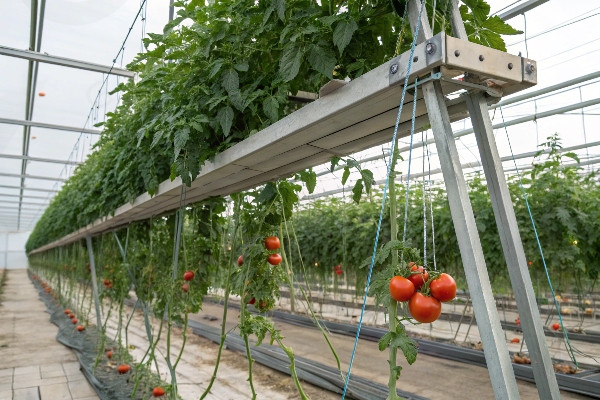
The structural requirements for tomato production are significantly different from those needed for many other crops. I learned this lesson early in my career when visiting a new greenhouse in Europe where the overhead support system sagged dangerously midway through the growing season. The structure had been designed for lighter crops like lettuce, not accounting for the tremendous weight of fully-loaded tomato vines.
Commercial Hanging Systems for Maximum Yields
The most productive commercial tomato operations today use hanging cultivation systems1, which we’ve specialized in at CFGET for over two decades. This approach allows plants to grow vertically for extended periods, often 10-12 months in controlled environments, dramatically increasing yields per square meter.
Key Components of an Effective Support System
Based on our extensive experience designing tomato-specific greenhouses across various climates, I’ve identified several critical structural elements required for successful tomato production:
Overhead Support Framework
The overhead truss system must be engineered specifically for the weight of tomato cultivation. A fully-loaded commercial tomato crop can easily add 40-50 kg/m² of additional weight to the structure through:
| Component | Typical Weight |
|---|---|
| Mature indeterminate tomato plant | 10-15 kg |
| Drip irrigation system (when filled) | 5-8 kg/m² |
| Heating pipes (water-filled) | 10-15 kg/m² |
| Crop support wires and clips | 3-5 kg/m² |
| Harvesting/maintenance equipment | Variable |
Our structural engineers calculate load requirements based not just on these standard weights but also on potential snow loads, wind forces, and the dynamic loads created during maintenance activities.
Plant Support Systems
Within this framework, individual plant support is critical. The "lower and lean" technique used in most commercial operations involves suspending plants from overhead wires and gradually lowering them as they grow. This requires:
- High-tensile support wires (minimum 3mm galvanized steel)
- Wire tensioning systems to maintain proper support as plants gain weight
- Plant clips and hooks rated for the weight of fully-loaded vines
- Strategic spacing to optimize light interception
One innovation we’ve implemented for several clients is a sliding track system that makes the lowering process more efficient and reduces labor costs. A large-scale producer in Mexico reported a 30% reduction in labor hours after implementing our refined support system.
Foundation and Column Strength
The foundation and vertical supports must transfer all of this weight safely to the ground. I’ve seen cases where inadequate foundations began to shift under the weight of a mature tomato crop, creating dangerous structural stresses.
For hanging systems, we typically recommend:
- Column spacing of 4-5 meters for optimal support
- Reinforced concrete foundations sized according to soil conditions
- Hot-dipped galvanized steel components with minimum thickness of 2.5mm
- Additional bracing in areas with high wind or snow loads
Substrate Support Considerations
As mentioned in our insights, modern tomato production often uses substrate methods2 rather than soil cultivation. These systems (typically using coco coir, rockwool, or perlite) require additional structural considerations:
- Substrate trough supports elevated from the ground
- Drainage collection systems
- Access pathways for maintenance and harvesting
- Additional load calculations for substrate weight when saturated
At a large-scale operation in Central Asia, we designed a specialized trough system that optimized water use while providing ideal root zone conditions. The system included integrated sensors that monitored substrate moisture and EC levels, allowing for precise irrigation management that improved water efficiency by 35%.
The investment in proper structural support pays dividends throughout the life of your greenhouse. At CFGET, we engineer our tomato greenhouse structures with these specialized needs in mind, ensuring that your investment continues to perform at peak capacity year after year, even under the significant loads that successful tomato production creates.
Conclusion
Choosing the right greenhouse for tomatoes requires careful consideration of height, glazing, ventilation, and structural support. With our 28 years of experience at CFGET, we’ve refined tomato greenhouse designs to maximize yields while minimizing problems. Contact us to create a custom solution for your specific climate and production goals.

